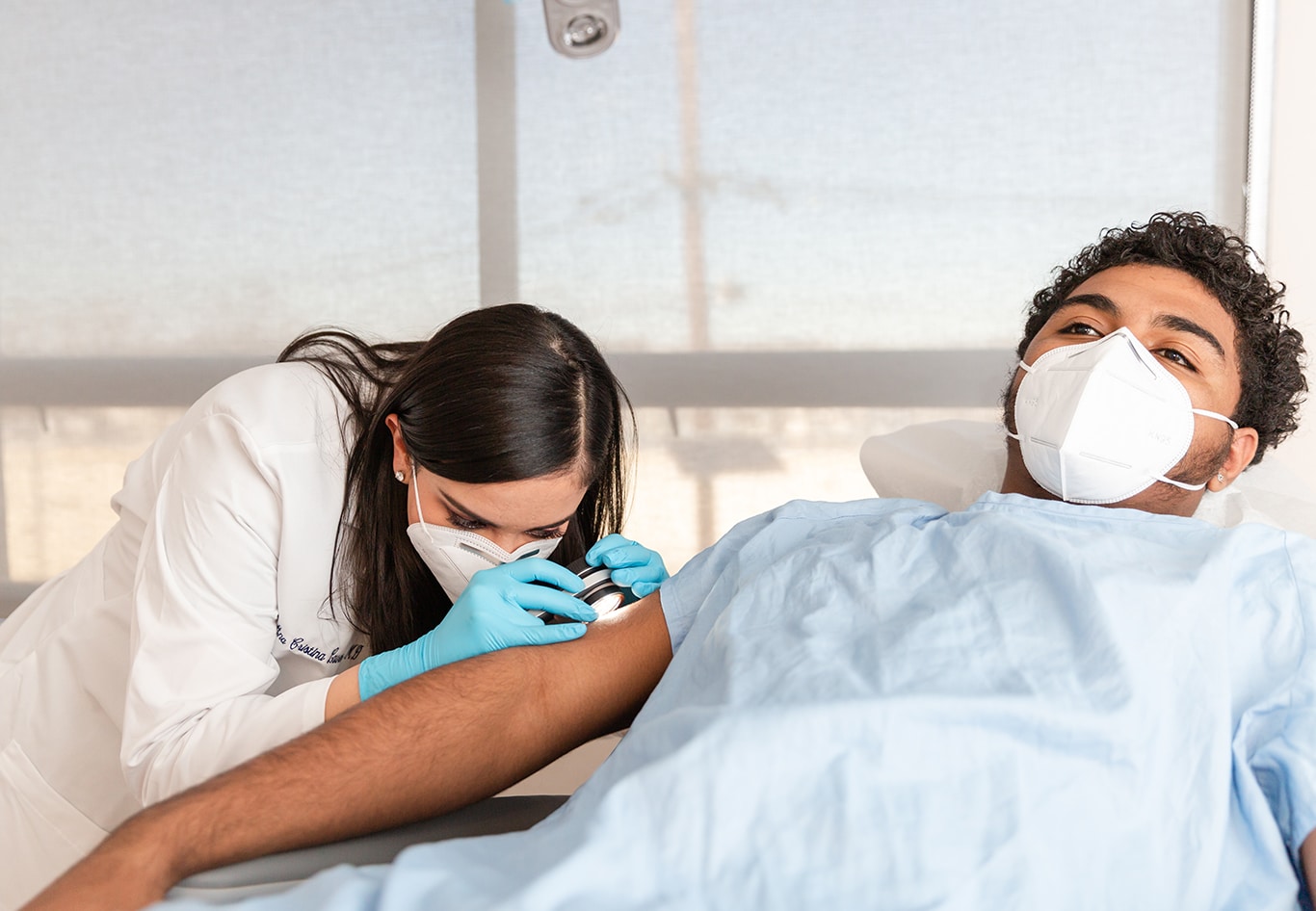
Skin Cancer
Skin cancer is one of the most common type of cancer in the United States. Fortunately, preventive screenings can reduce an individual’s chances of developing skin cancer as they age.
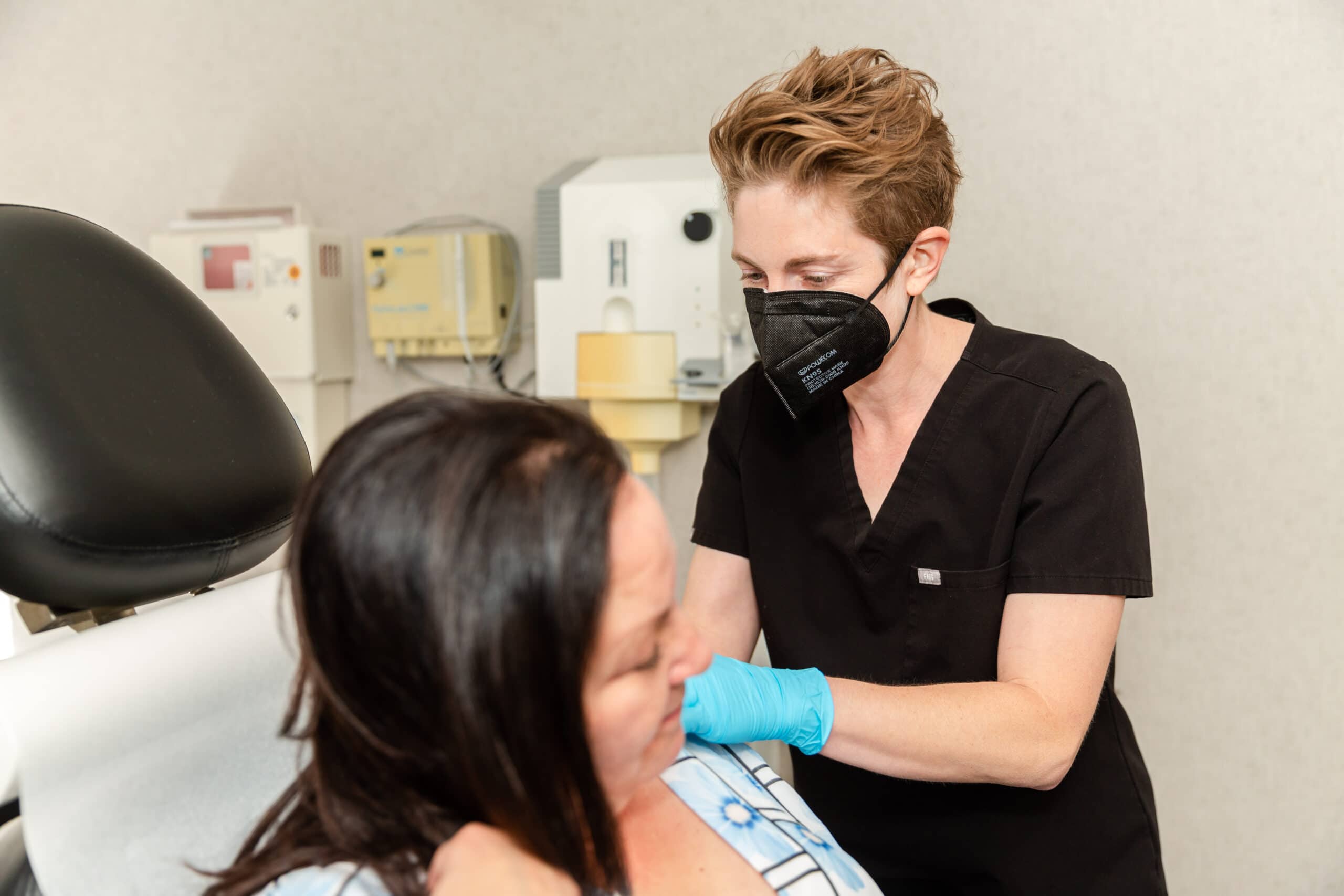
The best way to tell if you have skin cancer is to see a dermatologist. You should see a dermatologist right away for a skin cancer check if you see anything on your skin that lasts for 2 weeks or longer and is:
- Growing
- Changing shape
- Bleeding or itching
These are signs of skin cancer. If it is caught early and removed, skin cancer has a high cure rate.
The American Academy of Dermatology offers free skin cancer screenings throughout the year. We also can help you find a dermatologist in your area. Simply use the tools in the right column of this page.
The Most Common Skin Cancer
In the World
More than 2 million cases of skin cancer will be diagnosed this year. And that’s just in the United States. Most Americans will have one of these skin cancers:
- Basal (bay-sal) cell carcinoma
- Squamous (skwey-muhs) cell carcinoma
- Melanoma
Most people get skin cancer from too much sun- or tanning beds. Research shows that indoor tanning (e.g., tanning beds, sun lamps) increases a person’s risk of getting melanoma by 75 percent.
Anyone can get skin cancer. Even people who have skin of color get this cancer. Bob Marley, a musician from Jamaica, developed melanoma on his foot. Most people who get skin cancer, however, have lighter skin.
People who are more likely to get skin cancer:
- Spend a lot of time in the sun
- Use tanning beds or sun lamps
- Live (or once lived) in an area that gets intense sunlight, such as Florida, the Caribbean, or northern Australia
If this exposure was years ago, a person still has an increased risk. Even if the exposure did not last long, such as lying out for a few summers, there is a greater risk.
Risk Factors For Skin Cancer
Scientists have found that the following increases a person’s risk for getting skin cancer.
1) Skin: A person’s skin type and the moles on one’s skin affect the person’s risk for getting skin cancer. The risk increases when the person has:
- Fair skin, especially when the person also has blond or red hair and blue, green, or gray eyes
- Had bad sunburns, especially blistering sunburns
- Skin that burns or freckles rather than tans
- 50 or more moles
- Moles called “atypical nevi” or “dysplastic nevi.”
2) Family: When a close blood relative has (or had) skin cancer, a person’s risk of getting skin cancer rises. A close blood relative is a parent, brother, sister, or child.
3) Medical history: Having (or having had) any of the following puts a person at greater risk for getting skin cancer:
- Previous skin cancer.
- Actinic keratoses (AKs). Having AKs means the skin has lots of damage. This damage increases the risk of getting all types of skin cancer. Sometimes, an AK can progress to a type of skin cancer called squamous cell carcinoma.
- Organ transplant. The medicine that prevents the body from rejecting the organ also weakens the immune system. A weak immune system increases the risk of skin cancer.
- Bad burn. Skin cancer can develop where the skin has been badly burned.
- X-ray treatments. Receiving many x-ray treatments to treat a medical
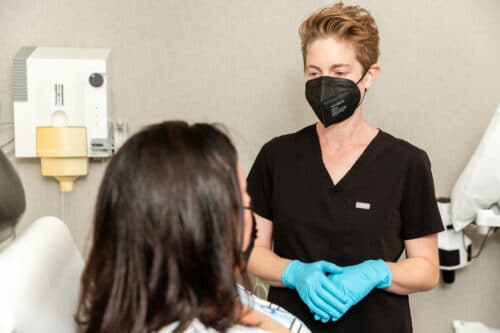
- Disease that weakens the immune system. Lymphoma and human immunodeficiency virus (HIV) are a few diseases that weaken the immune system.
- Xeroderma pigmentosum. People who inherit this rare disease get many skin cancers.
- Gorlin’s syndrome (also called basal cell nevus syndrome). People who have this rare disease can get many basal cell carcinomas early in life. They also have a higher risk for getting melanoma and non-Hodgkin’s lymphoma.
4) Exposure to chemicals: People exposed to any of the following have a much higher risk of skin cancer:
- Arsenic (working with or swallowing).
- Coal.
- Industrial tar.
5) Tobacco: Smoking or chewing tobacco may increase the risk of getting squamous cell carcinoma, a type of skin cancer, in the mouth or throat.
To diagnose skin cancer, a dermatologist looks at the skin. A dermatologist will carefully examine skin growths, moles, and dry patches. To get a better look, a dermatologist may use a device called a dermoscope. The device shines light on the skin. It magnifies the skin. This helps the dermatologist to see pigment and structures in the skin. If a dermatologist finds something that looks like skin cancer, the dermatologist will remove it (or part of it). The removed skin will be sent to a lab. Your dermatologist may call this a biopsy. Skin cancer cannot be diagnosed without a biopsy. A biopsy is quick, safe, and easy for a dermatologist to perform. A biopsy should not cause anxiety. The discomfort and risks are minimal.
Skin Cancer Treatments
There are many treatments for skin cancer. A dermatologist selects treatment after considering the following:
- Type of skin cancer
- Where the skin cancer appears on the body
- Whether the skin cancer is aggressive
- Stage of the cancer (how deeply the skin cancer has grown and whether it has spread)
- Patient’s health
Surgical Treatments
After considering the above, your dermatologist will choose 1 or more of the following treatments for skin cancer.
Surgical treatment: When treating skin cancer, the goal is to remove all of the cancer. When the cancer has not spread, this is often possible. To remove skin cancer, the following surgical treatment may be used:
- Excision: To perform this, the dermatologist numbs the skin and then surgically cuts out the skin cancer and a small amount of normal-looking skin. This normal-looking skin is called a margin. There are different types of excision. Most excisions can be performed in a dermatologist’s office.
- Mohs surgery: A dermatologist who has completed additional medical training in Mohs surgery performs this procedure. Once a dermatologist completes this training, the dermatologist is called a Mohs surgeon. Mohs surgery begins with the surgeon removing the visible part of the skin cancer. Because cancer cells are not visible to the naked eye, the surgeon also removes some skin that looks normal but may contain cancer cells. This part of the surgery is performed one layer at a time. After removing a layer of skin, it is prepared so that the surgeon can examine it under a microscope and look for cancer cells. If the surgeon sees cancer cells, the surgeon removes another layer of skin. This layer-by-layer approach continues until the surgeon no longer finds cancer cells. In most cases, Mohs surgery can be completed within a day or less. The cure rate for skin cancer is high when Mohs surgery is used.
- Curettage and electrodesiccation: This surgical procedure may be used to treat small basal cell and squamous cell skin cancers. It involves scraping the tumor with a curette (a surgical instrument shaped like a long spoon) and then using an electric needle to gently cauterize (burn) the remaining cancer cells and some normal-looking tissue. This scraping and cauterizing process is typically repeated 3 times. The wound tends to heal without stitches. Sometimes, curettage is used alone.
Nonsurgical Treatments
Other treatments: Surgical treatment is not right for every case of skin cancer. Some patients cannot undergo surgery. Sometimes, surgery cannot remove all of the cancer, and more treatment is used to help get rid of the cancer. If the skin cancer is caught very early, surgery may not be necessary.
Other treatments for skin cancer are:
- Immunotherapy: This treatment uses the patient’s own immune system to fight the cancer. The patient applies a cream (generic name is imiquimod) to the skin as directed by the dermatologist.
- Cryosurgery: The dermatologist freezes the skin cancer. Freezing destroys the treated area, causing the skin and cancer cells to slough off.
- Chemotherapy applied to the skin: The generic name for the medicine used in this treatment is 5-fluorouracil or 5-FU. The patient applies 5-FU to the skin cancer. It destroys the damaged skin cells. When the skin heals, new skin appears.
- Chemotherapy: If the cancer spreads beyond the skin, chemotherapy may kill the cancer cells. When a patient gets chemotherapy, the patient takes medicine. This medicine may be swallowed, injected (shots), or infused (given with an IV). The medicine travels throughout the body and kills the cancer cells. The medicine also destroys some normal cells. This can cause side effects, such as vomiting and hair loss. When chemotherapy stops, the side effects usually disappear.
- Photodynamic therapy: This treatment consists of 2 phases. First, a chemical is applied to the skin cancer. This chemical sits on the skin cancer for several hours. During the second phase, the skin cancer is exposed to a special light. This light destroys the cancer cells.
- Radiation therapy: Radiation may be used to treat older adults who have a large skin cancer, skin cancers that cover a large area, or a skin cancer that is difficult to surgically remove. Radiation therapy gradually destroys the cancer cells through repeat exposure to radiation. A patient may receive 15 to 30 treatments. This treatment is often only recommended for older adults. Many years after a person is exposed to radiation, new skin cancer can develop.
What Outcome Can Someone With Skin Cancer Expect?
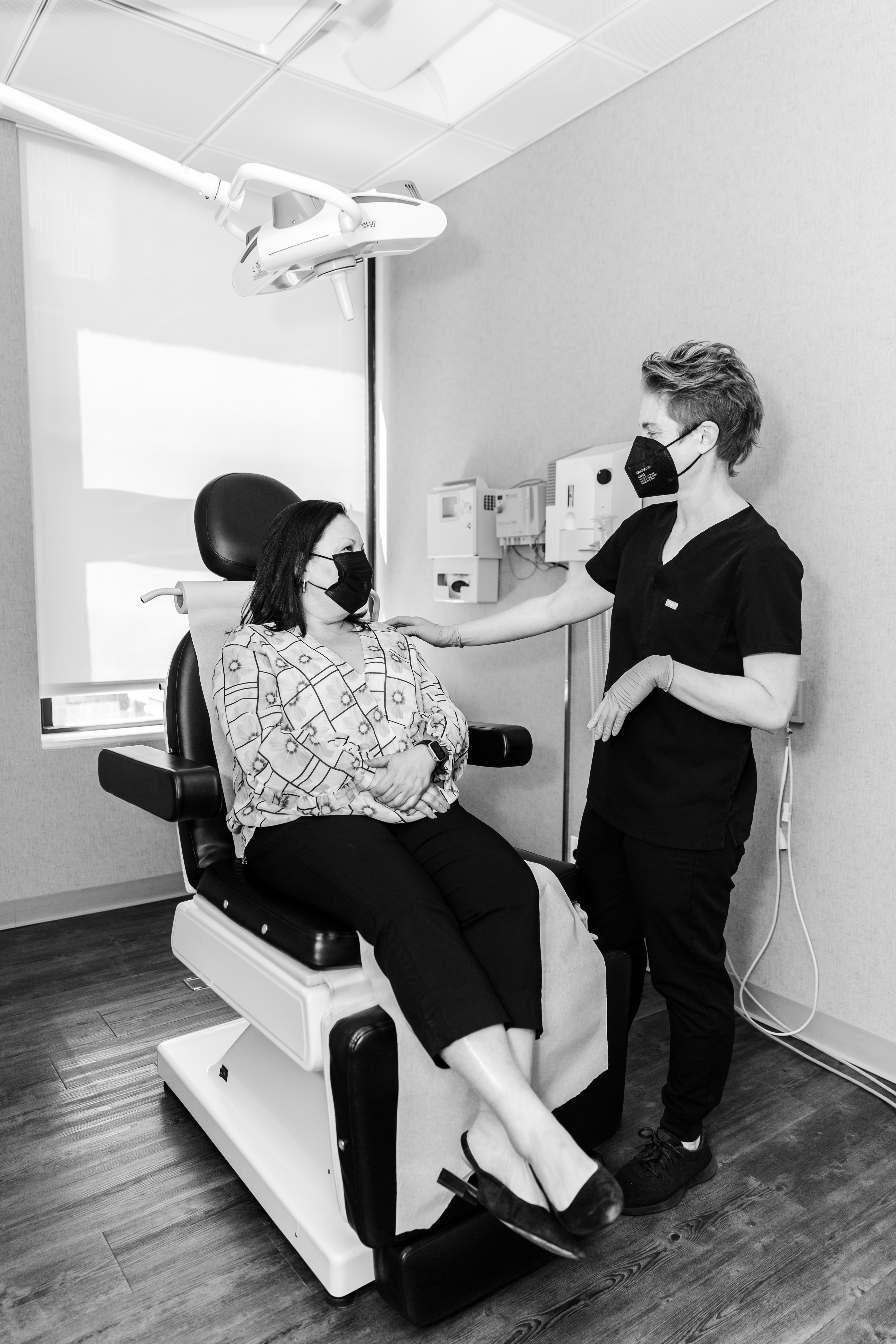
If it is caught early and properly treated, skin cancer can be cured. Even melanoma, which can be deadly, has a cure rate of almost 100 percent when treated early. Even if you get a clean bill of health, you need to continue to see your dermatologist. Once a person gets skin cancer, the risk of getting another skin cancer is higher. Sometimes skin cancer returns. Your dermatologist will tell you how often you should return for checkups. Without early treatment, the outcome is not as favorable. Skin cancer can grow deeply. Removing the cancer can mean removing muscle and even bone. Reconstructive surgery may be needed after the surgery to remove the skin cancer. And skin cancer can spread. If the cancer spreads, treatment can be difficult. Treatment may not cure cancer that spreads.
LEARN MORE AT YOUR CONSULTATION IN ENGLEWOOD CLIFFS, NJ TODAY
With early detection from a board-certified dermatologist, skin cancer is treatable. For more information on skin cancer, contact our office today to schedule your consultation.
OTHER Skin Conditions
Acne
Acne is the most common skin condition in the United States. Although it’s common, accurate information about acne can be scarce.
Acne Cysts
An acne cyst forms when the pore fills with dead skin cells oil, and bacteria. A cyst goes deep into the skin and can hurt.
Actinic Keratosis
An actinic keratosis or AK is a rough, dry, scaly patch or growth that forms on the skin. An AK forms when the skin is badly damaged by ultraviolet (UV) rays from the sun or indoor tanning.
Alopecia (Hair Loss)
Millions of people experience hair loss. Some people see their hair re-grow without doing anything. Others need treatment for their hair to re-grow. Sometimes, hair will not re-grow.
Atopic Dermatitis/Eczema
This is a common skin disease in children. Children often get atopic dermatitis (AD) during their first year of life. If a child gets AD during this time, dry and scaly patches appear on the skin.
Atypical Mole (Dysplastic)
This type of mole can look like melanoma. It is not melanoma. But you have a higher risk of getting melanoma if you have certain risk factors.
Basal Cell Carcinoma
Basal cell carcinoma (BCC) is the most common form of skin cancer. More than two million cases of this skin cancer are diagnosed in the United States each year.
Bed Bugs
Bedbugs are tiny insects that feed on human blood. They hide in dark places close to where humans sleep and usually crawl out to feed while people are fast asleep.
Dry Skin
Dry skin is common. It can occur at any age and for many reasons. Using a moisturizer often helps repair dry skin.
Eczema
Eczema is a word that means irritated skin. Doctors don’t really know why some kids and adults get eczema, and others don’t. They think it might happen for a variety of reasons.
Thousands of People in the Metro Area Trust
Scherl Dermatology
CONTACT US
Scherl Dermatology
Englewood Cliffs, NJ 07632
Same-Day Appointments Now Available
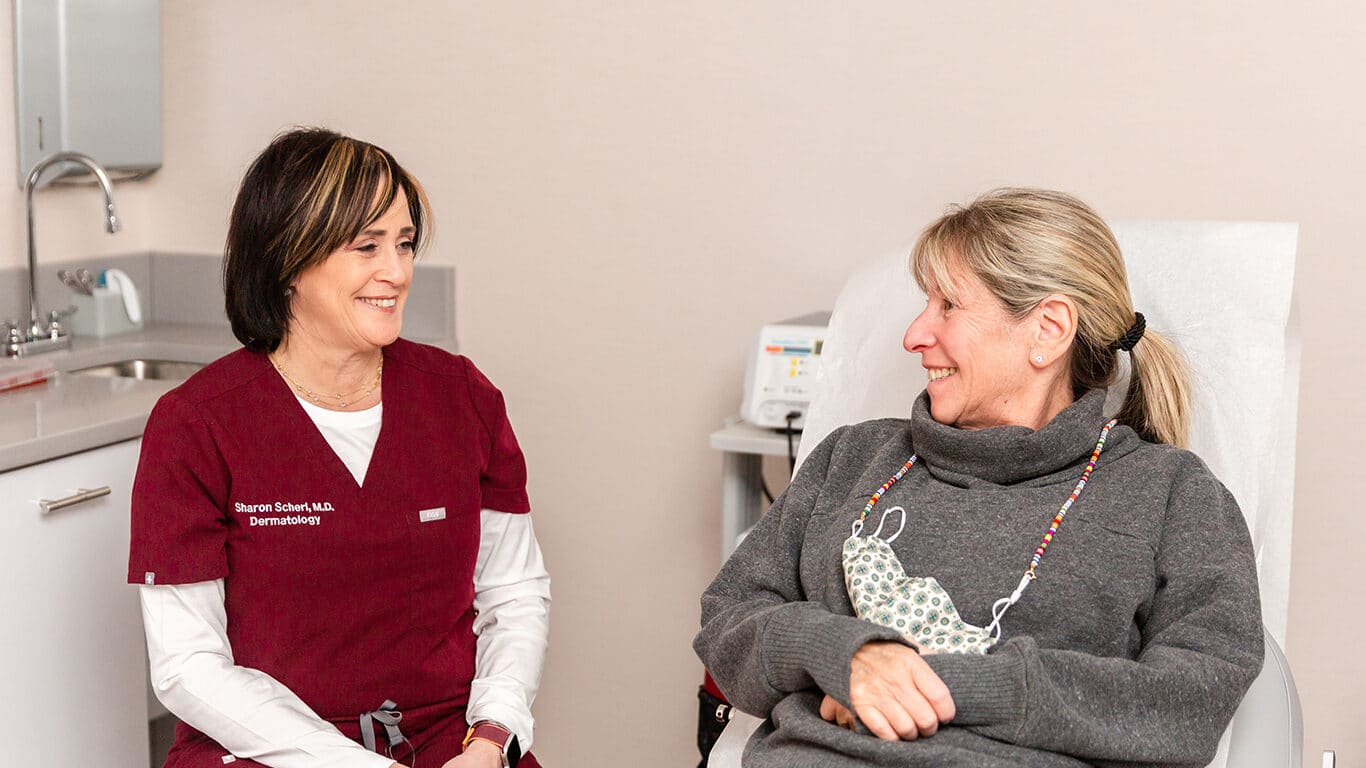

CONTACT US
Scherl Dermatology
140 Sylvan Ave. Suite 302,
Englewood Cliffs, NJ 07632
Same-Day Appointments Now Available
Scherl Dermatology


©2024 Schweiger Dermatology Group. All Rights Reserved. Privacy Policy | The information available on this website is provided for informational purposes only. This information is not intended to replace a medical consultation where a physician's judgment may advise you about specific disorders, conditions and or treatment options. We hope the information will be useful for you to become more educated about your healthcare decisions. If you are vision-impaired or have some other impairment covered by the Americans with Disabilities Act or a similar law, and you wish to discuss potential accommodations related to using this website, please contact us at 201.568.8400 .